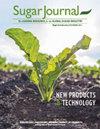南非糖厂太阳能制热的初步研究
IF 0.3
4区 农林科学
Q4 Agricultural and Biological Sciences
引用次数: 2
摘要
南非制糖业的太阳能热能系统可以减少锅炉中的煤炭消耗,并部分取代甘蔗渣(压榨的甘蔗纤维)作为加热燃料。以某代表性糖厂的热平衡和物质平衡为基础,根据其潜在的能源效益和经济效益,确定了最有前途的太阳能热集成点,并对其进行了排序。已确定的太阳能过程热(SPH)的机会是产生活蒸汽和排气蒸汽,锅炉给水的预热,甘蔗渣和原糖的干燥,以及透明果汁的加热。无需额外的储热,ST系统可以提供这些过程中12%至27%的热量需求。SPH系统的估计平均热量成本(LCOH)范围从粉碎季节(CS)太阳能干燥原糖的2.57欧分/千瓦时(0.42 ZAR/kWh)到全年太阳能热蒸汽发电的4.57欧分/千瓦时(0.75 ZAR/kWh)。本研究假设SPH必须与南非最便宜的能源煤炭竞争,以取代甘蔗渣。根据目前的煤炭价格和过去的价格涨幅,如果太阳能蒸汽发电可以全年使用,例如用于电力出口,估计可实现的内部收益率(IRR)为4.6%。压榨季节的干糖IRR最高,预计为9.1%。本文章由计算机程序翻译,如有差异,请以英文原文为准。
Initial study on solar process heat for South African sugar mills
Solar thermal (ST) systems for the South African (SA) sugar industry could reduce coal consumption in the boilers and partly replace bagasse (pressed sugar cane fibres) as a heating fuel. Based on the heat and mass balance of a representative sugar mill, the most promising solar heat integration points were identified and preranked according to their potential energetic and economic benefits. The identified opportunities for solar process heat (SPH) are the generation of live steam and exhaust steam, the pre-heating of boiler feed water, the drying of bagasse and raw sugar, and the heating of clear juice. Without additional thermal storage, ST systems can supply between 12 and 27 % of the heat demand of these processes. The estimated levelized costs of heat (LCOH) for the SPH systems range from 2.57 Eurocent/kWh (0.42 ZAR/kWh) for solar drying of raw sugar during the crushing season (CS) to 4.57 Eurocent/kWh (0.75 ZAR/kWh) for all-year solar live steam generation. This study assumes that SPH has to compete with coal, which is the cheapest energy source in SA, to replace bagasse. Using current coal prices and past price increase rates, the estimated achievable internal rate of return (IRR) for solar live steam generation is 4.6 % if the steam can be used during the whole year, e.g. for electricity export. The highest IRR of 9.1 % is expected for sugar drying during the crushing season.
求助全文
通过发布文献求助,成功后即可免费获取论文全文。
去求助
来源期刊

International Sugar Journal
工程技术-农艺学
自引率
33.30%
发文量
0
审稿时长
18-36 weeks
期刊介绍:
International Sugar Journal, first published in 1869, is a peer reviewed technical-trade journal focusing on latest developments in sugar technology and sugar industry. The journal embraces scientific and technical advances in agricultural production right through to the production of sugar crystal, as well as economic, trade and policy issues. Main topics include:
• sugarcane and sugar beet production
• front end operations
• cane and beet sugar manufacture
• sugar refining
• economics, trade and legislation and
• biorenewables (cogeneration, biofuels and biobased products)
Related topics, namely analysis, instrumentation, equipment and machinery, food and non-food uses of sugar and alternative sweeteners also form the focus of the journal.
 求助内容:
求助内容: 应助结果提醒方式:
应助结果提醒方式:


